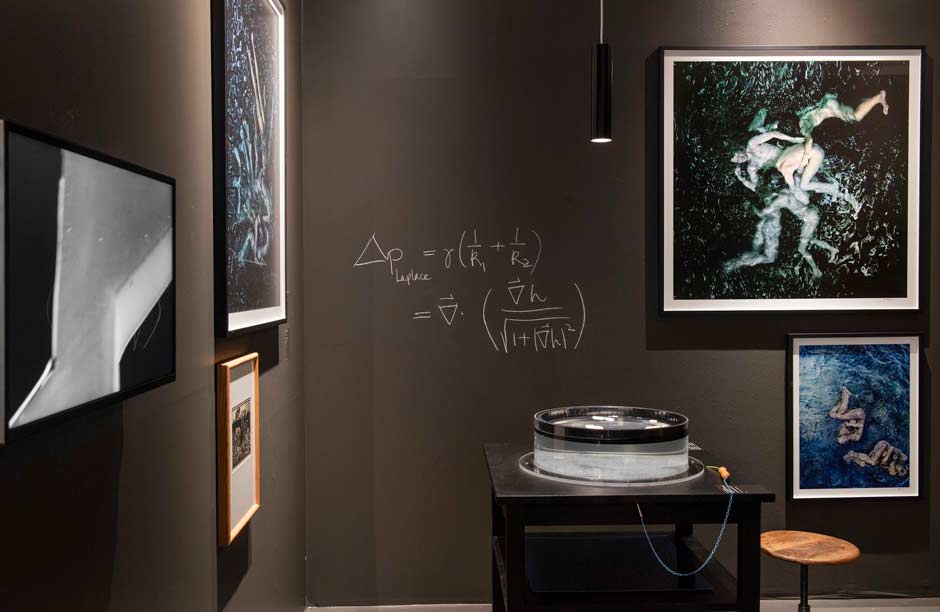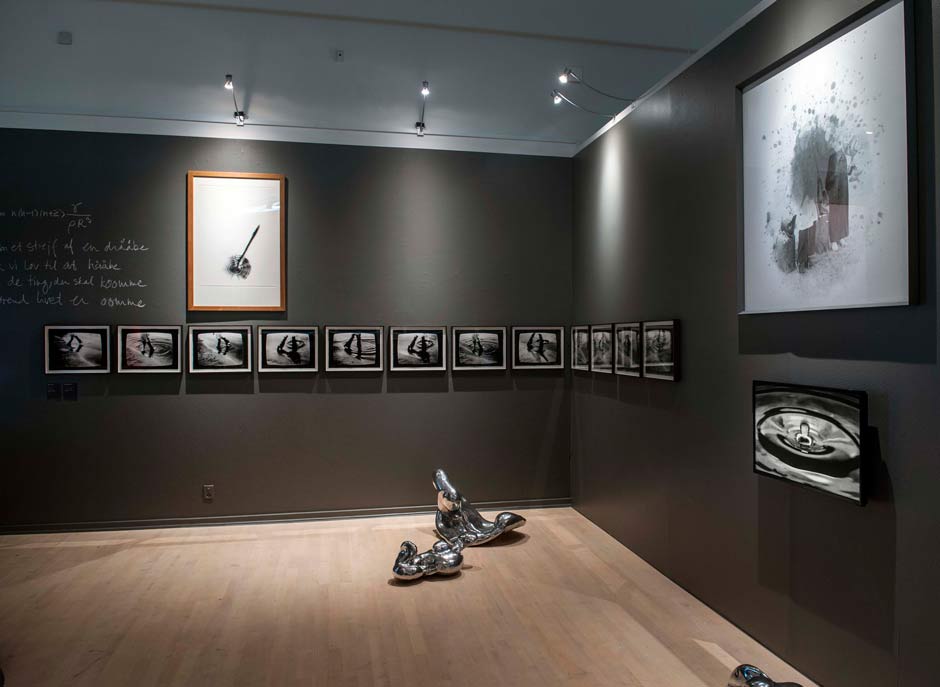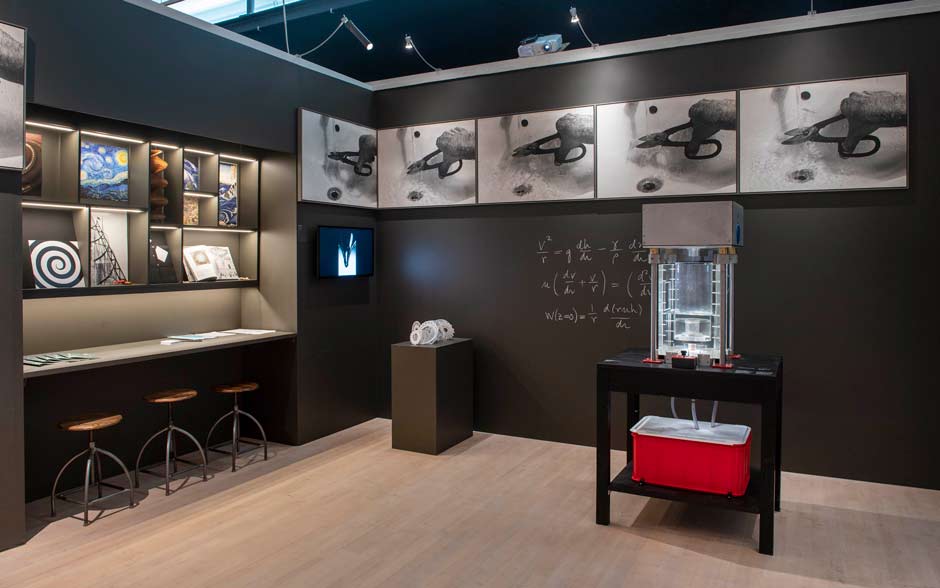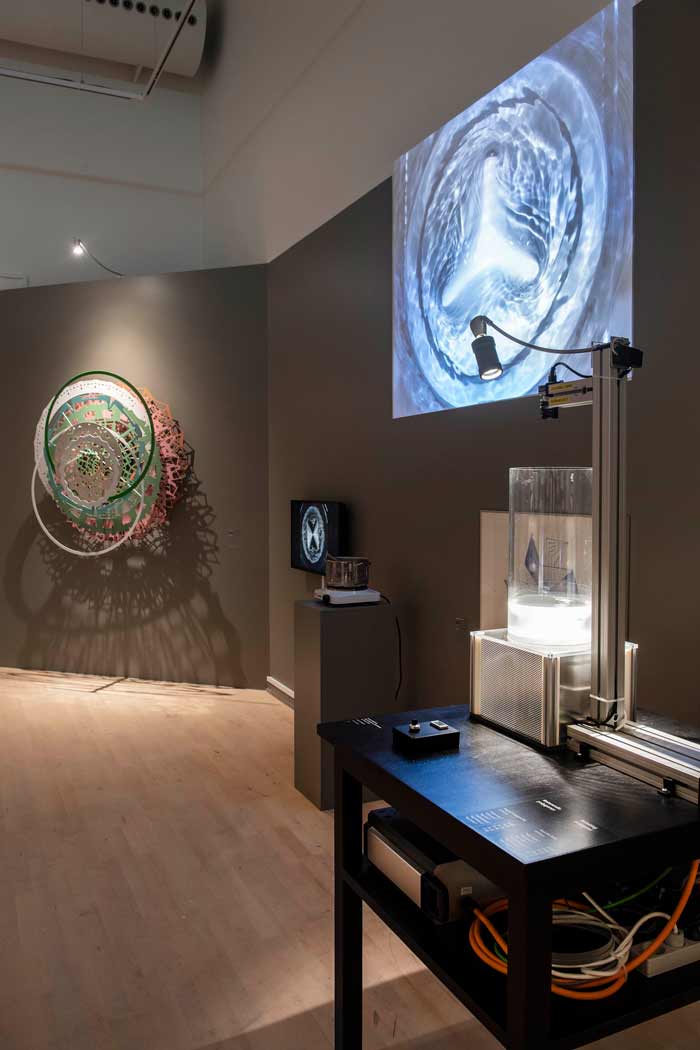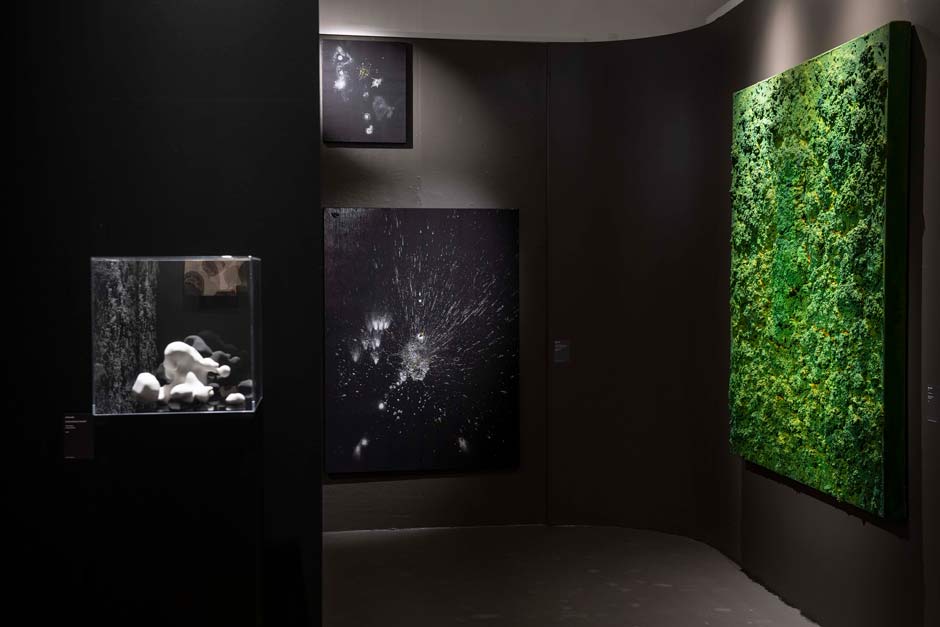Wunderkammer 1 – Fluid form
October 5 2018 – March 17 2019
We have all seen a drop fall onto the water surface, and we have all tried stirring liquids in a pot. Thus, from our everyday lives we are already acquainted with the phenomenon of ‘fluid dynamics’.
The exhibition Wunderkammer 1 – Fluid form has been created in cooperation with professor of physics Tomas Bohr and his team from The Technical University of Denmark. Bohr’s research is on just that – fluid dynamics, and in connection with this exhibition he has recreated five of his laboratory experiments. These scientific experiments not only determine the organization of the exhibition; rather they have become decisive for the curators’ selection of art works.
The exhibition is the first of three wunderkammer projects dedicated to the investigation of how art may be reconnected with the realm of everyday experiences, and with life in general. For this innovative idea, Esbjerg Art Museum in 2017 received The Bikuben Foundation’s Vision Exhibition Award.
Participating artists: A Kassen, Artnode, Per Morten Abrahamsen, William Anastasi, Jean Arp, Thomas Bang, Ejler Bille, Vilhelm Bjerke-Petersen, Tone Bjordam, Maj-Britt Boa, Bosch & Fjord, Mikkel Carl, Claus Carstensen, Søren Dahlgaard, Jesper Dalgaard, Christian Dotremont, Olafur Eliasson, Rose-Lynn Fisher, Wilhelm Freddie, Ib Geertsen, Nils Erik Gjerdevik, Nikos Gyftakis, Jørgen Haugen Sørensen, Henry Heerup, Jeppe Hein, Jörg Herold, Louise Hindsgavl, Johannes Holbek, Astrid Kruse Jensen, Asger Jorn, Eske Kath, Ferdinand Ahm Krag, Carl Krull, Thorbjørn Lausten, Christian Lemmerz, Roy Lichtenstein, Ann Lislegaard, Jens Lund, Paul McDevitt, Anton Melbye, Richard Mortensen, Sirous Namazi, Palle Nielsen, Erik Ortvad, Fabrizio Plessi, Nikolaj Recke, Tobias Rehberger, Alexis Rockman, Troels Sandegård, Nina Saunders, Peter Nansen Scherfig, Lotte Rose Kjær Skau, Christian Skeel, Bosco Sodi, Rainer Splitt, Thomas Struth, Margrete Sørensen, Keith Tyson, Kirstine Vaaben, Margit Vasby, Victor Vasarely, James Welling, Svend Wiig Hansen, Mogens Zieler, Peter Zimmermann, Troels Aagaard og Gunnar Aagaard Andersen
Find the booklet here.
ABOUT THE WUNDERKAMMER PROJECT:
The aim:
The aim of the project is to develop a new exhibition format. Often art is presented and experienced as something external from life. In this project, however, we want to develop an exhibition form which adresses it’s audience in such a way that it will have an impact on their lives. Nothing less.
The concept ’Wunderkammer’ has its origins in a time before we divided different subjects as eg. humanities and science into different fields of interest and research, and before we developped the taxonomies that we today take for granted and use to structure and understand the world.
It’s our thesis that the chaotic and inhomogene presentation which characterizes the Wunderkammer, can provoke the visitors’ curiosity and encourage them to explore the art pieces in the exhibitions. It is also our thesis that it will lead to a personal and strong experience with art that might find an echo in every aspect of human life.
The exhibitions:
Wunderkammer 1 (autumn 2018). Chaotic theory and fluid dynamics will be used as the basic principle for organizing this first exhibition. Art pieces will be juxtaposed with or even integrated in laboratory set ups and scientific experiments. Partner: Professor in science (physics) at DTU Cph Tomas Bohr.
Wunderkammer 2 (autumn 2019). Combining scientific taxonomic methods with a subjective artistic gaze this second exhibition will involve the viewer as co-creative and transform the exhibition area into a total installation – an art piece in its own right. Partner: Mark Dion, USA
Wunderkammer 3 (spring 2021). Returning to ancient times and the fundamental conditions for human existence contemporary art works, created for this third Wunderkammer exhibition, will be presented together with archaeological and palaeontological findings. Partner: professor Eske Willerslev and assistant professor Martin Sikora, Centre for GeoGenetics, University of Copenhagen.
The research:
The research will take place at four levels:
Our three partners will unfold their area of research in each show respectively.
Assistant professor in psychology, Bjarne Sode Funch (RUC) will together with the museum’s director study what the museum visitors gain from this new exhibition format.
Assistant professor in art history, Rune Gade (University of Copenhagen) will analyse the exhibitions from a semiotic and museological perpective.
The museum’s international team of resaerchers will respond to each exhibition and all the data.

